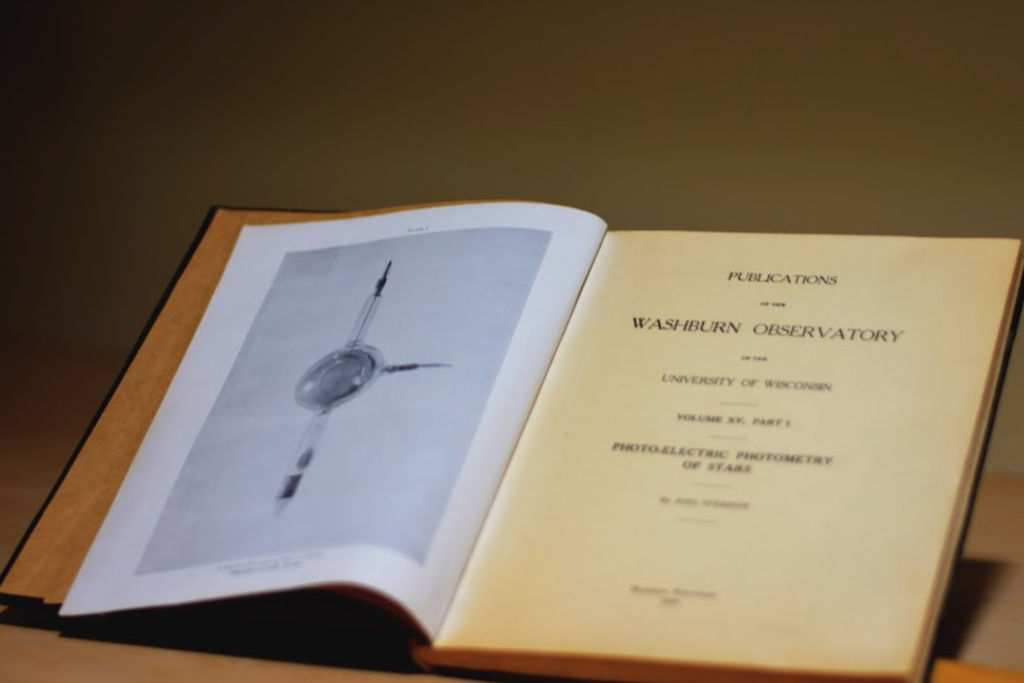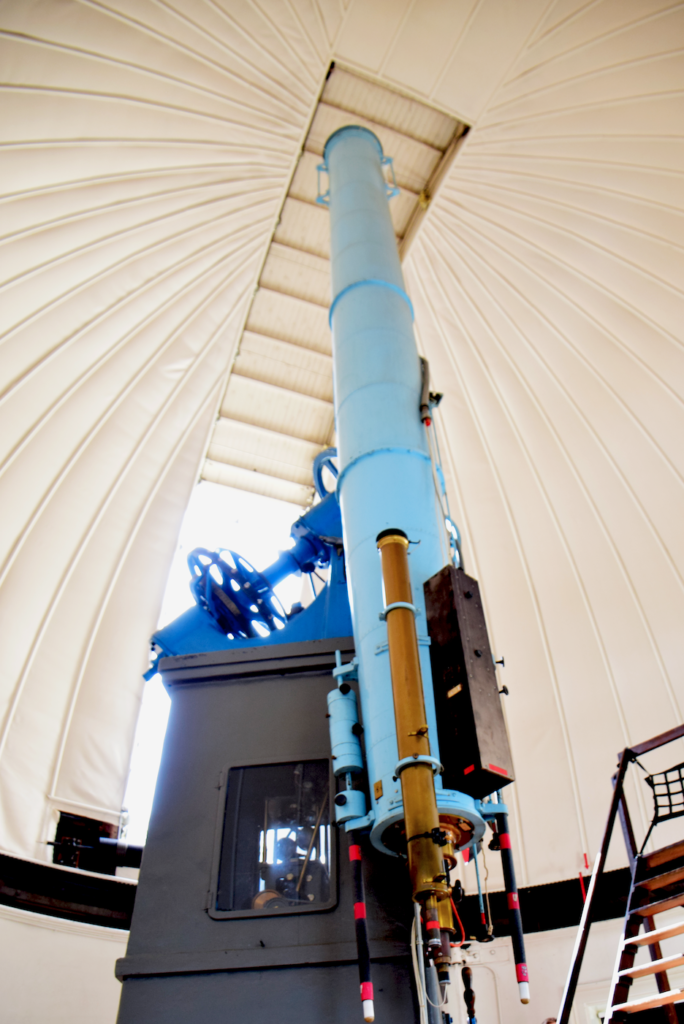143 years after being built, the Washburn observatory continues to offer a view of the cosmos to the public. See how dedicated engineering and innovative techniques contributed to the extraordinary lifetime of this UW-Madison icon.
Outlasting its namesake, former governor C. C. Washburn, by over half a century and remaining scientifically relevant for decades after its sibling telescopes fell out of use, the Washburn Observatory celebrated its 60th birthday in 1940 with a central role in numerous research projects.

Photography by Hridyesh Tewani
“Most telescopes of this kind and era have much shorter lifetimes” explains Jim Lattis, the current caretaker of the observatory. “In fact, this telescope probably had the longest scientifically productive lifetime of any that you could easily mention.”
“This telescope probably had the longest scientifically productive lifetime of any that you could easily mention.”
Jim Lattis
So, what’s the secret of its longevity? A. E. Whitford, then future observatory director, opined in a December 1940 article of the magazine that the development of ingenious ways to use the decades-old device kept the Washburn telescope relevant. Chief among these was photoelectric photometry, pioneered in the United States by Dr. Joel Stebbins, director of the observatory from 1922 to 1948. Photometry research buoyed the Washburn Observatory through the 1920s and 1930s, just as visual eye-based research had in the decades prior.
Seeing this, Whitford confidently declared, “the future holds no apparent threat to [the observatory’s] place of leadership in its field.” The observatory’s tenure at the forefront of photometry research had no end in sight, as the only location in the United States where scientists conducted this caliber of research. Indeed, the dedication of Dr. Stebbins and his peers kept Washburn and UW-Madison at the forefront of that field for almost forty years.

Photography by Hridyesh Tewani
Lattis believes the connection between the telescope and research at UW-Madison runs deeper, saying “[this is] the first research facility… specifically established for research on this campus… It’s the visible foundation of that kind of tradition here.”
Washburn Observatory certainly lived up to its reputation as the patriarch of Wisconsin astronomical research. Perhaps its most important discovery, an estimate of the diameter of the Milky Way galaxy, came in 1934, half a century after it was built. Fueled by the ingenuity of its researchers, the observatory remained prevalent in Wisconsin astronomy for almost two decades after Whitford published his article.
However, the observatory soon faced a pressing challenge from urbanization: light pollution. Foreseeing this threat, Whitford suggested in his 1940 article that the observatory be moved away from the smoke and streetlights of central Madison. Instead, the university opted for a simpler solution, and in 1958 built the new Pine Bluff Observatory 15 miles west of the city. Soon afterwards, the Washburn telescope saw the end of its 78-year saga of scientific contributions.
Capping off a legacy of endurance, today the Washburn telescope still functions for purposes ranging from a History of Astronomy class taught by Lattis to public observing nights. It handles all these demands with remarkable fortitude. Indeed, the most common cause of repairs, such as those that closed Washburn for most of the past year, revolve not around the telescope itself but the mechanism to open the dome it sits beneath.
When asked about the observatory’s place in the past and future of UW-Madison, Lattis notes, “Washburn poured a lot of his personal wealth into this and it wasn’t as a showpiece for himself. He was investing in the future.” He concludes, “I think it represents an acknowledgement to the past… [and also] our obligations to the future, not only to pass this along, but to invest in the future the way those guys invested in the future.”
“Washburn poured a lot into this but it wasn’t as a showpiece…he was investing in the future.”
Jim Lattis
Demonstrating the value of “resourcefulness and ingenuity,” as Whitford said, the Washburn telescope is an icon whose 143-year legacy will continue to shape UW-Madison for decades to come.

Photography by Hridyesh Tewani


One reply on “An Investment in the Future: The Legacy of the Washburn Observatory”
Thanks for the nice article! Your readers might appreciate knowing that they need not enroll in a class to visit the observatory. Visitor nights since 1881 have been the 1st and 3rd Wednesdays of each month, weather permitting. Details at go.wisc.edu/washobs